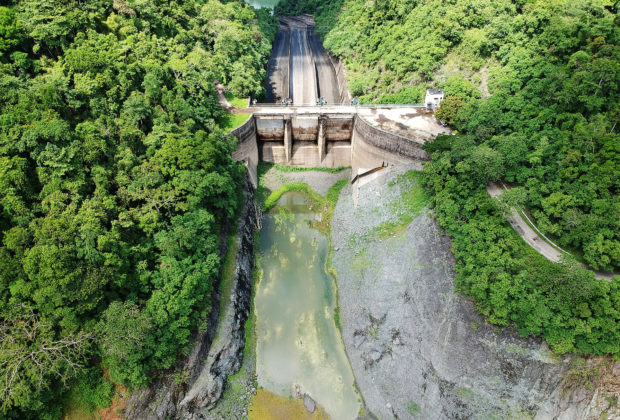
ELEVATION DROP: The weather bureau expects the water elevation of Angat Dam, which supplies consumers in Metro Manila, to drop near or below the reservoir’s minimum operating level of 180 meters above sea level by the end of April due to the summer heat. —INQUIRER FILE PHOTO
CITY OF MALOLOS, Bulacan, Philippines — The stock in Angat Dam continues to drop because of a lack of rain, threatening the water supply in Metro Manila and surrounding provinces.
As of 6 a.m. on Sunday, the water level at Angat was 202.20 meters above sea level (masl), lower by 0.09 m from the previous day. The stock’s normal elevation is 212 masl.
The water in the dam has gone down by as much as .79 m since Feb. 11, according to the Philippine Atmospheric, Geophysical and Astronomical Services Administration (Pagasa).
Summer heat
Pagasa has projected the dam’s stock to dip near or below the reservoir’s minimum operating level of 180 masl by the end of April due to the summer heat.
The situation has prompted the National Water Resources Board (NWRB) to keep the water allocation for Metro Manila at 42 cubic meters per second (cms), which is below the normal allocation of 46 cms.
Sevillo David, NWRB executive director, said the allotment for irrigation in Bulacan and Pampanga provinces through the National Irrigation Authority (NIA) remained at 20 cms.
The NWRB approved the allocation last month, but the Bulacan Federation of Irrigators’ Associations said this was not enough to irrigate the farms in the province.
There are 25,000 hectares of rice farms in 17 towns in Bulacan and four towns in Pampanga. Most of these farms get irrigation water from Angat Dam through Bustos Dam, also in Bulacan.
According to Felix Robles, head of the water control and coordinating unit of the NIA-operated Bustos Dam, the 20-cms allocation covers more than 16,000 hectares in the two provinces.
Farmers need more water
But Ildefonso Canquin, a farmer from Bulakan town, said the farmers had been lobbying for 30 cms so they could irrigate more land and increase their production.
—Carmela Reyes-Estrope